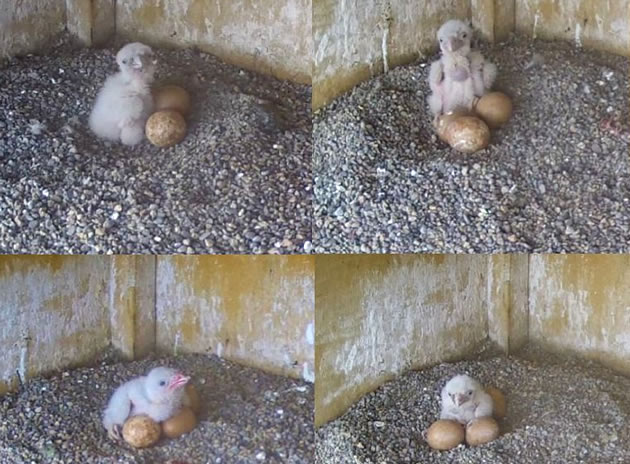Name A Battersea Power Station Falcon Chick
Your chance to be part of local folklore

The peregrine falcons at Battersea Power Station recently laid four eggs and now the first one has hatched, but remains nameless.
If you can come up with the perfect name for the little grey lovely pictured above, go to the Power Station’s Twitter or Facebook page and make your suggestion in the comments section of the Peregrine Falcon post to enter the draw for a special gift from peregrine expert David Morrison. Perhaps you’ll draw inspiration from your experience of lockdown, or maybe you’ll chose something relating to local history or the site’s architecture? Give your imagination free rein to come up with a prize-winning original for the new hatchling.
David used to be employed in the construction industry in Battersea, but nowadays he’s a consultant licensed by Natural England and advises organisations on how to co-exist with peregrines nesting on their properties. He’s always been a huge fan of peregrines and he worked with the Battersea Power Station Development Company to come up with a plan that would allow the refurbishment of the Power Station to go forward without breaking the law and disturbing the falcons who had taken up residence when the site was derelict.
The first peregrines were seen in London in the 1990s, and a pair moved into Battersea Power Station in 2000 – some 17 years before the first human residents – making it one of London’s first peregrine nesting sites.
The peregrines’ original nests in one of the old Power Station’s wash towers was ideal from the birds’ point of view. It was high up, sheltered, difficult for ground-based predators to reach, and offered an excellent position for keeping a watch out for prey and rival falcons.
“They don’t like anything near them at their own height, or higher,” explains David Morrison “They don’t mind lots of activity down on the ground, but they want to be high above it.”
When the rebuild of the Power Station’s four towers began in 2013 David ensured that the falcons had an alternative, attractive nest site in a location nearby where they wouldn’t interfere with the construction programme or it with them. At a cost of more than £100,000, a tower of the same kind used to support large cranes was erected with a nest box for the peregrines installed at the top. David closed off their old nest and waited.
“It was a tense time,” he says. “You can’t be sure what they’re going to do.”
The new tower, however, turned out to be a triumph. The peregrines moved in straight away and have bred there every year since, successfully raising more than a dozen young birds and becoming as much a part of the Power Station’s iconography as the building itself.
May 20, 2020